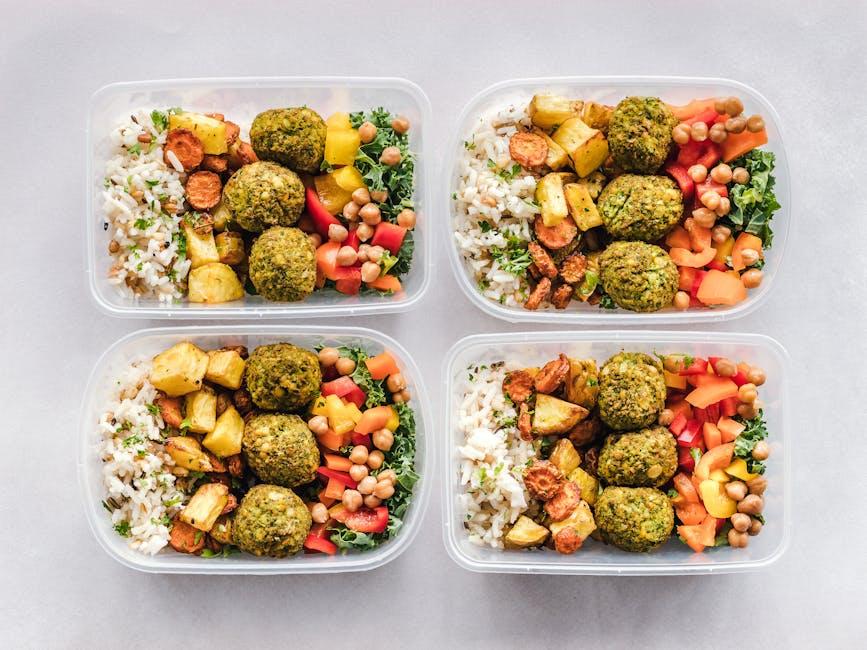In today’s fast-paced world, maintaining a balanced diet can often feel like a daunting task. Yet, the key to achieving nutritional success lies in crafting a meal plan tailored specifically to your unique lifestyle. Whether you’re a busy professional, a parent juggling multiple responsibilities, or someone simply striving for better health, creating a personalized meal plan can streamline your routine and elevate your well-being. In this guide, we will walk you through the essential steps to design a meal plan that not only aligns with your dietary preferences and schedule but also empowers you to meet your health goals with confidence and ease. Get ready to transform your approach to eating and discover how a well-structured meal plan can seamlessly integrate into your life, providing nourishment and satisfaction every day.
Understanding Your Nutritional Needs
Grasping the essentials of your dietary requirements is crucial in crafting a meal plan that seamlessly integrates with your lifestyle. Begin by considering your unique health goals, whether they involve weight management, muscle gain, or maintaining energy levels throughout the day. Understanding these objectives allows you to tailor your meals to provide the necessary nutrients without overwhelming your schedule.
- Macronutrients: Balance your intake of proteins, carbohydrates, and fats according to your activity level and health goals.
- Micronutrients: Incorporate a variety of fruits and vegetables to ensure you’re getting a wide range of vitamins and minerals.
- Hydration: Don’t forget the importance of water. Adequate hydration supports digestion and overall well-being.
By focusing on these core elements, you can develop a meal plan that not only aligns with your nutritional needs but also complements your daily routine, ensuring that healthy eating becomes a sustainable and enjoyable part of your life.

Balancing Variety and Nutrition in Your Meals
Creating a meal plan that caters to both variety and nutrition can feel like a daunting task, but it doesn’t have to be. By focusing on a few key principles, you can design meals that are both exciting and nourishing. Start by ensuring your meals include a mix of protein, carbohydrates, and healthy fats. This balanced combination fuels your body and keeps you satiated throughout the day. Explore different sources for each category; for example, proteins can come from beans, fish, or tofu, while carbohydrates can be sourced from quinoa, sweet potatoes, or whole grains.
To keep your meals interesting, aim to incorporate a rainbow of fruits and vegetables throughout the week. Not only do they add vibrant colors to your plate, but they also provide a wide range of vitamins and minerals. Consider these strategies to boost variety:
- Rotate your grains: Swap out rice for farro or barley.
- Experiment with spices and herbs: Enhance flavors without adding extra calories.
- Mix up your cooking methods: Try roasting, steaming, or grilling to bring out different textures and tastes.
- Plan theme nights: Dedicate each night to a different cuisine, such as Italian, Mexican, or Thai, to explore diverse flavors and ingredients.
By embracing these strategies, you can enjoy meals that not only satisfy your taste buds but also support your health goals. Remember, the key to a successful meal plan is flexibility and willingness to adapt as your tastes and nutritional needs evolve.

Incorporating Time-Saving Techniques
Streamlining your meal prep process can be a game-changer for busy individuals looking to maintain a balanced diet without spending hours in the kitchen. Here are some effective techniques to maximize efficiency:
- Batch Cooking: Dedicate one day a week to cook large quantities of staple ingredients like grains, proteins, and vegetables. This allows you to mix and match these components throughout the week for quick, diverse meals.
- Use a Slow Cooker or Instant Pot: These appliances are perfect for hands-off cooking. Simply throw in your ingredients, set the timer, and let the machine do the work while you focus on other tasks.
- Pre-Chopped Ingredients: Invest in pre-chopped vegetables or spend some time prepping them yourself at the start of the week. This saves time during daily meal preparations and makes it easier to throw together a healthy dish.
- Meal Kits: Consider using meal kit delivery services that provide pre-measured ingredients and step-by-step recipes. This can significantly cut down on shopping and prep time, ensuring you have everything you need for a quick meal.
Implementing these strategies not only saves time but also minimizes stress, allowing you to enjoy nutritious meals without the hassle. Embrace these techniques and see how they can transform your weekly routine.

Adapting Your Meal Plan to Evolving Lifestyle Changes
As life progresses, so do our dietary needs and preferences. Whether you’re starting a new job, embarking on a fitness journey, or embracing a new dietary philosophy, it’s crucial to ensure your meal plan aligns with these shifts. Begin by assessing your current lifestyle and identifying key changes. Consider the following factors:
- Time Constraints: If your schedule has become busier, prioritize quick and easy recipes or meal prepping on weekends.
- Dietary Goals: Adjust macronutrient ratios to support new fitness or health objectives.
- Budget Adjustments: If financial priorities have shifted, incorporate cost-effective ingredients without compromising nutrition.
Once you’ve pinpointed these aspects, tailor your meal plan to include foods that are not only nutritious but also adaptable to your lifestyle. Here are some adaptable meal planning tips:
- Embrace versatile ingredients like quinoa, which can serve as a base for both salads and hearty bowls.
- Stock up on frozen fruits and vegetables to ensure you always have nutritious options on hand.
- Experiment with international cuisines to keep meals exciting and prevent monotony.
By thoughtfully adapting your meal plan, you can maintain a balanced diet that seamlessly integrates with your evolving lifestyle.
